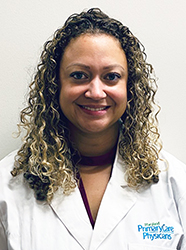By: DELILAH MILLIGAN, CRNP
Cervical cancer was once the leading cause of cancer death for American women. Thanks to routine testing and vaccination, it is now largely preventable, but women of color still get and die from the disease at higher rates than other women.
Cause of cervical cancer
Cervical cancer occurs in the cells of the cervix — the lower part of the uterus that connects to the vagina. Most cases of cervical cancer are caused by the human papillomavirus (HPV), a sexually transmitted infection. Most people’s immune systems fight off HPV with no problem. In 10%-20% of women, however, the virus survives and can cause cervical cancer.
Routine Pap tests can detect precancerous conditions of the cervix, as well as early stages of cancer, and the HPV vaccine is effective in preventing the disease. With this combination, cervical cancer rates and deaths have declined by 75% in recent years.
Racial disparities in cervical cancer
Despite this good news, women of color are twice as likely to get and die from cervical cancer than white women. Reasons for this include disparities experienced by some minority women:
• Economic barriers to gynecologic care. Low-income women are less likely to be able to access health care, including cervical cancer screening.
• Even when they get a Pap test, minority women have less access to follow-up care. This makes them more likely to get a late-stage diagnosis of cervical cancer when successful treatment is more difficult.
• Black women are the least likely of any racial group to get the HPV vaccine. Barriers include limitations in insurance coverage, lack of information about the value of the HPV vaccine, and mistrust of the health care system.
Symptoms of cervical cancer
Early-stage cervical cancer generally has no symptoms. Signs of more advanced cancer include:
• Vaginal bleeding after intercourse, between periods, or after menopause
• Watery, bloody vaginal discharge that may be heavy and have a foul odor
• Pelvic pain or pain during intercourse
Reducing your risk of cervical cancer
• Receiving a vaccination to prevent HPV infection can reduce your risk of cervical cancer. Ask your doctor whether an HPV vaccine is right for you.
• Routine Pap tests can detect precancerous conditions of the cervix, as well as catch cancer early when it’s treatable. Begin Pap tests at age 21 and repeat them every few years.
• Prevent HPV and other sexually transmitted infections by practicing safe sex, such as using a condom every time.
• Smoking has been linked to cervical cancer, so if you smoke, talk to your doctor about ways to quit.
 Delilah Milligan, Certified Registered Nurse Practitioner, received her Bachelor of Science in Nursing degree from Notre Dame of Maryland University and her Master of Science in Nursing degree from Chamberlain College of Nursing. She cares for patients in MPCP’s Glen Burnie office.
Delilah Milligan, Certified Registered Nurse Practitioner, received her Bachelor of Science in Nursing degree from Notre Dame of Maryland University and her Master of Science in Nursing degree from Chamberlain College of Nursing. She cares for patients in MPCP’s Glen Burnie office.



